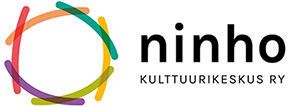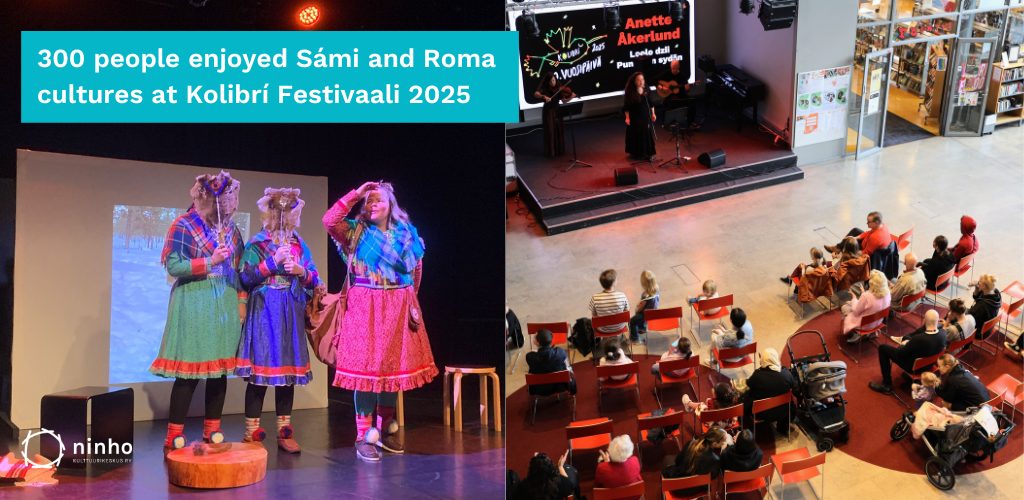
Written by Núria Rovira Martí
Text in Davvisámegiella (SE) and Suomen Romanikieli / Kaalo (KAL) below.
This autumn, we wrapped up the 10th anniversary of Kolibrí Festivaali, a truly special milestone in Kulttuurikeskus Ninho’s journey to build a more inclusive and multilingual children’s culture in Finland. It was our biggest edition yet, with record numbers of families and artists joining us to celebrate creativity, diversity, and community.
Thanks to the support of Suomen Kulttuurirahasto, this year we were able to take an important step forward by launching a special open call for Roma and Sámi artists and creatives. This initiative aimed to create space for heritage culture and languages that are rarely on children’s cultural stages in Finland, particularly in the Uusimaa region: Finnish Romani (Suomen romanikieli) and Northern Sámi (Davvisámegiella).
Thanks to this special open call, Roma artist Anette Åkerlund and Sámi artist, Petra Biret Magga-Vars, were included in Kolibrí 2025 program.
These voices became a highlight of our Family Days. That brought together nearly 300 participants in 3 activities, marking the first time that Roma and Sámi artists have taken the stage at Kolibrí.
Songs That Keep a Language Alive: Anette Åkerlund at Sello Library
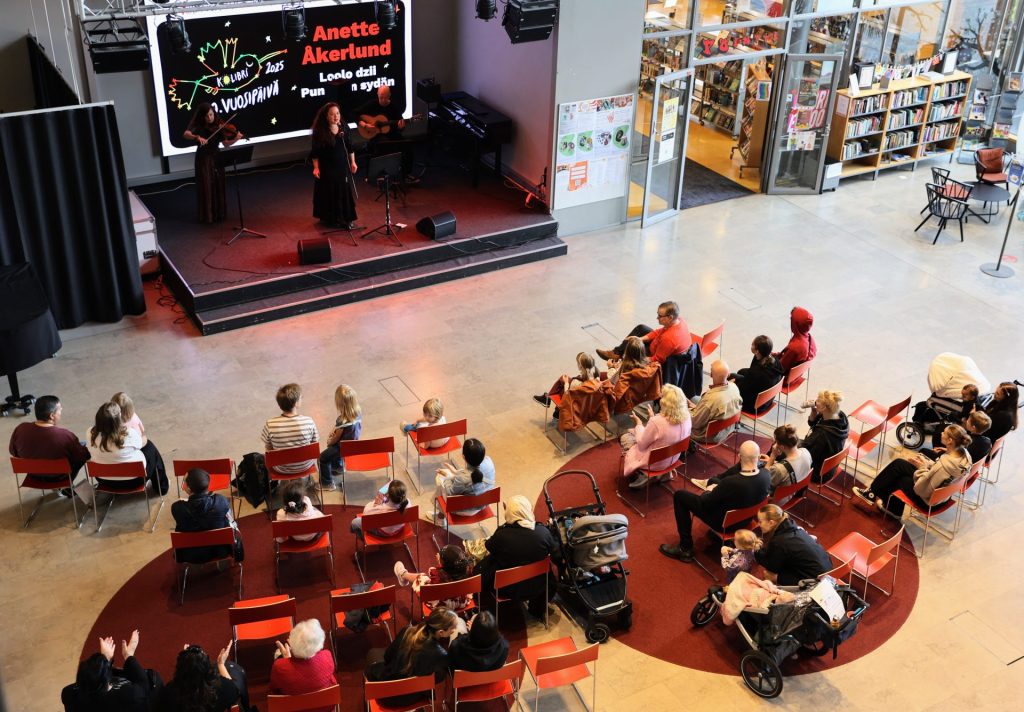
On September 13th, artist Anette Åkerlund brought passion and warmth to the Sello Library with her concert, singing songs in Finnish Romani and creating a moving and joyful atmosphere for families.
Reflecting on the power of language and music, Anette Åkerlund shared:
“I hope that Roma children will have the opportunity to hear the Romani language within their families from early childhood, and that parents will speak Romani with their children more often in the future. I’m sure that Roma songs in the Romani language will play an important role in supporting this”
Celebrating Northen Sámi and crafts with Petra Biret
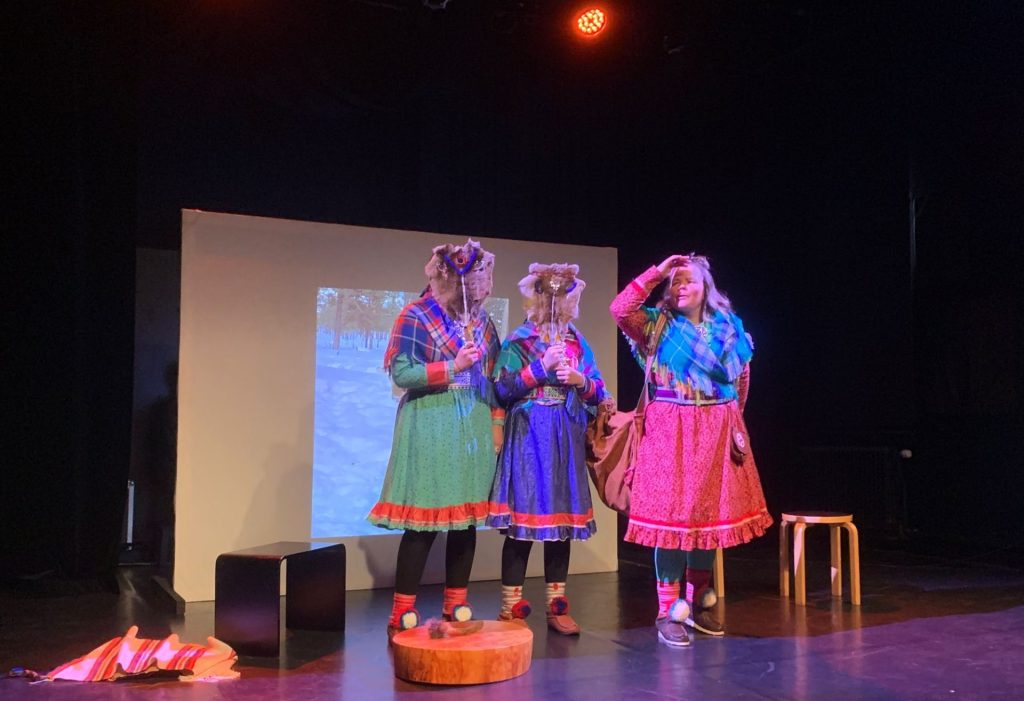
On September 27th, Sámi artist and educator Petra Biret Magga-Vars performed together with her daughters, sharing traditional lullabies and songs in Northern Sámi in a very special yoik performance. Afterward, they led a non-stop workshop where children crafted small amulets from reindeer antlers – a moment of creativity and cultural sharing.
Reflecting on the importance of language and belonging, Petra Biret Magga Vars, Sámi artist and yoik performer, shared:
“I wish that all languages – even the smaller ones – would be heard in this world,
and that they would find their rightful place. I also wish that our children and young people would have more opportunities to participate in activities in their own language.”
Celebrating Cultural Exchange at Children’s Cultural Field:
The feedback we received from cultural producers and collaborators was very encouraging. They emphasized how meaningful it was to include artists from these backgrounds, noting that their participation brought new audiences, fresh perspectives, and moments of genuine cultural exchange.
As one co-producer remarked, “the Sámi program was a very welcome addition, and we hope it can also be part of the program in the future.” Another highlighted that “it’s a good idea to have a special open call for Roma and Sámi artists.”
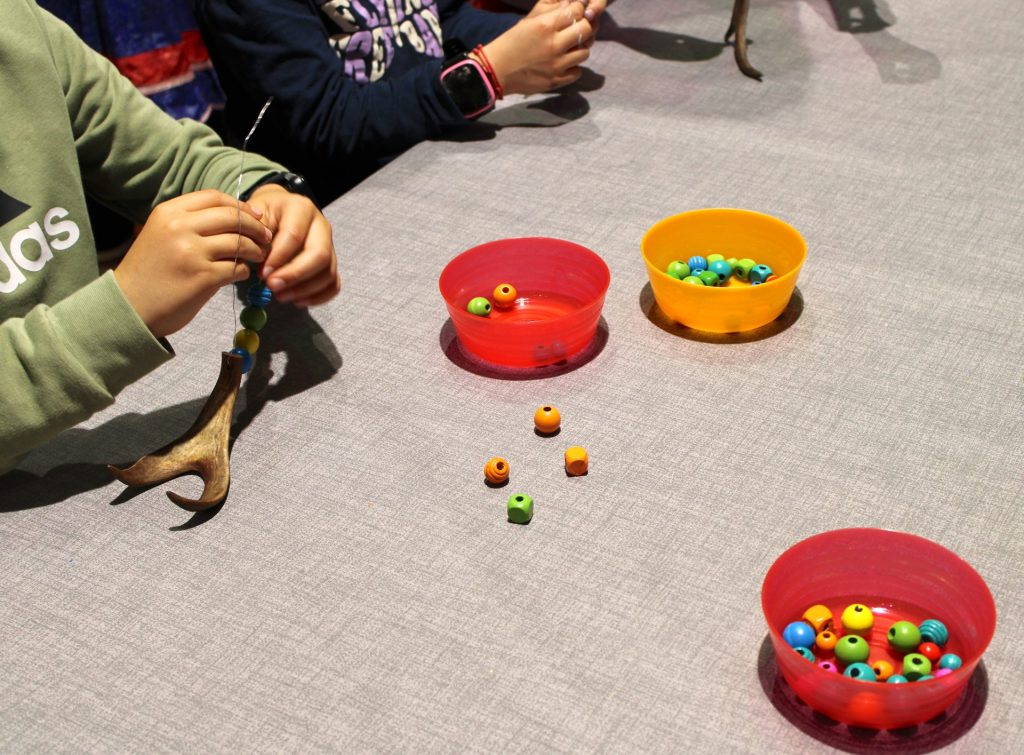
It was particularly special to see families from many communities sharing these experiences together.
Offering free and accessible events where everyone can participate, learn, and celebrate side by side, truly reflects the spirit of Kolibrí: a space where every language, story, and culture has a place.
Visibility That Matters: Comms actions to highlight Finnish Romani and Northern Sámi at Kolibrí Festivaali
This year also marked the first time that our website and social media channels featured Finnish Romani and Northern Sámi languages, thanks to the collaboration of our wonderful translators. For us, this visibility is not only symbolic. Showing these languages in public might seem small, but it matters: every time they are recognized and shared, it helps fight against their disappearance and supports their revival.
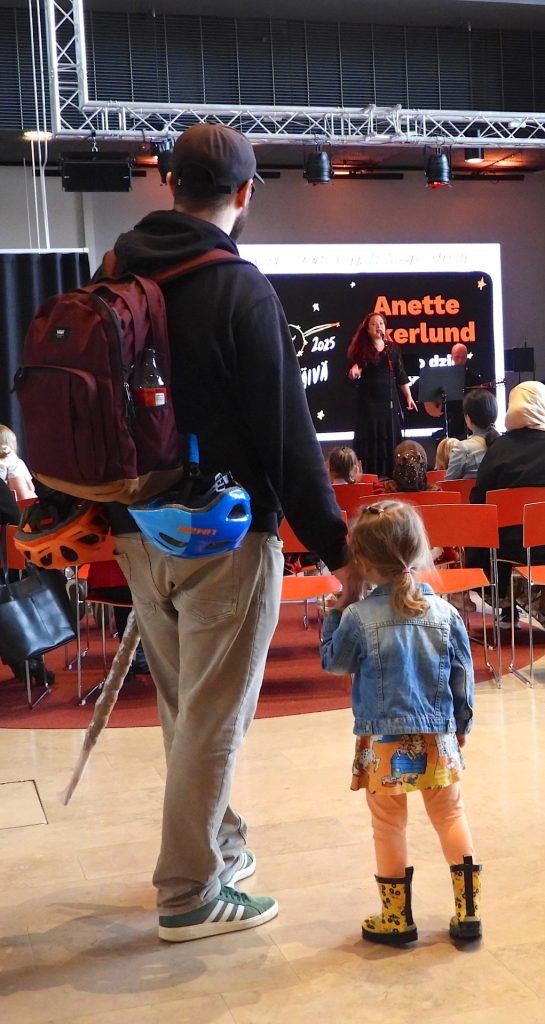
From a holistic anthropological and linguistic perspective, early childhood is a crucial period for language acquisition and cultural identity formation.
Children need to hear and engage with their Finnish non-dominant heritage language from the earliest stages of life to develop a strong sense of belonging and continuity.
Providing spaces where young children encounter Finnish Romani and Sámi, through art and culture, supports both cognitive and social development while nurturing pride in cultural roots.
A Call to Keep Protecting Living Heritage in Finland
As we close this festival edition, we feel both proud and motivated to continue this path. Recently, Yle News highlighted the alarming decline in the number of children learning Finnish Romani, often due to a lack of awareness and resources.
At the same time, other reports have shown that Sámi languages are also at risk, especially in urban areas where children have fewer opportunities to use the language and where teacher shortages limit formal learning.
These realities underscore the urgency of initiatives where language, art, and childhood intersect to sustain living heritage. At Ninho, we believe that every child deserves to hear and share their language in joyful, creative spaces—and that these voices, no matter how small, must continue to be heard.
That’s why, to further this mission, we are actively pursuing additional funding to expand and deepen our work. We have applied to Suomen Kulttuurirahasto to extend this project in 2026, enabling another special open call and ensuring the presence of artists working in these heritage languages across our programs throughout the entire year. This support will allow us to reach more children, families, and communities, and continue fostering the visibility, vitality, and continuity of these heritage languages.
